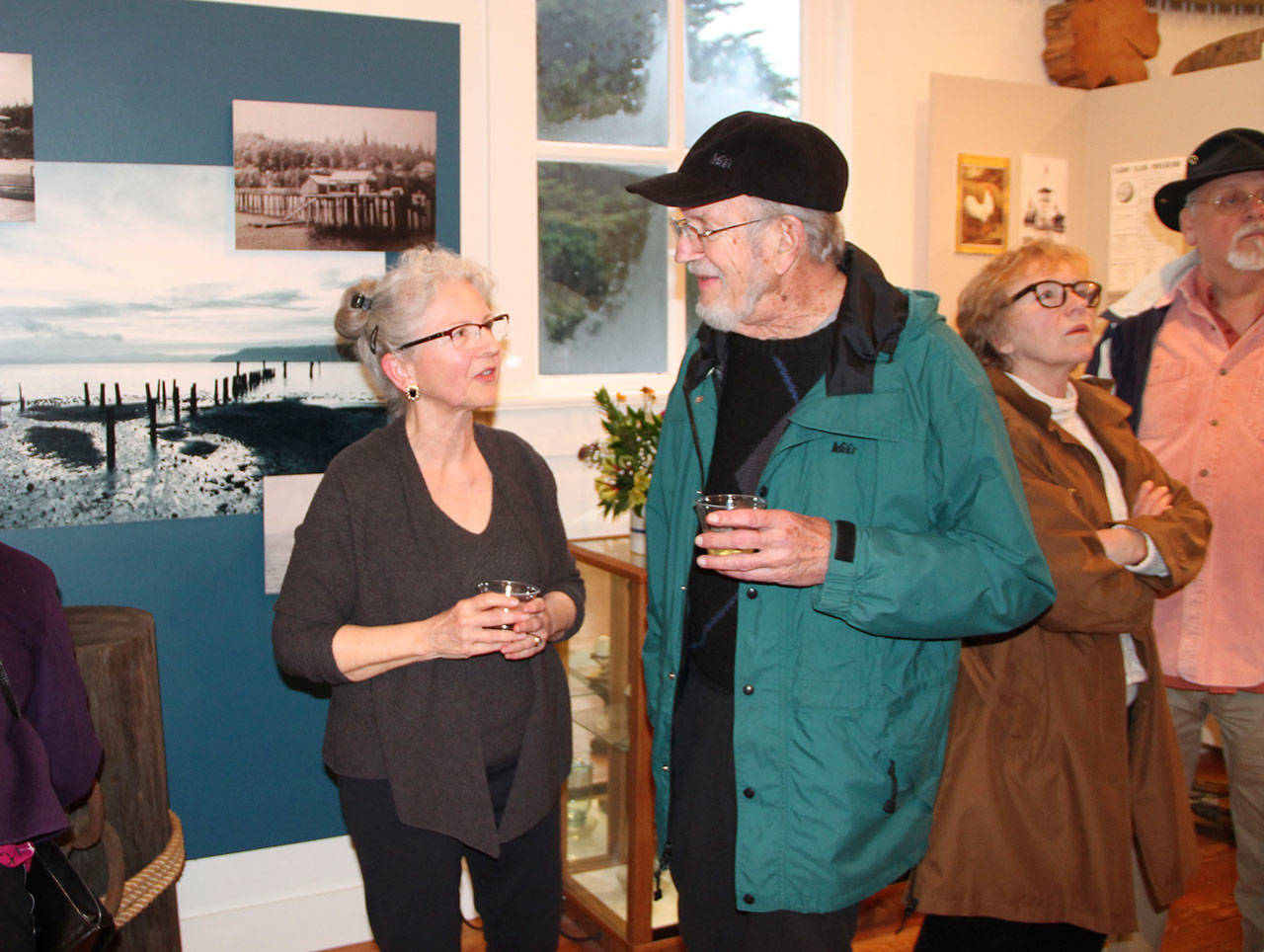Guests who stopped by the Heritage Museum during last Friday’s art walk experienced a slice of island history in a new exhibit that showcases Ellisport, now a quiet neighborhood, but once a bustling community complete with a lumber mill, extensive greenhouses and hotel.
The exhibit, Ellisport: The Hidden History, reveals the sometimes surprising past of the community from 1879 to the present and is the work of many Ellisport residents, both past and current. Carla Okigwe, the curator of the show, is one of those residents, and last Thursday, she and Jessica De Wire, the show’s designer, were working hard to finish the exhibit before a docent tour and Friday’s opening.
Okigwe, a self- professed history buff and former urban planner, has lived in the neighborhood for a decade and conceived of the show a few years ago.
“If you were a visitor and you came, you would be surprised what is here,” she said. “There is a lot of stuff here that people do not know about; they do not know how (the area) got developed.”
As an example, she held up a photograph taken in the parking area that overlooks the water and the pilings off the beach at Ellisport. People might look at them and believe they are the remnants of the original Ellisport dock, she said, but that would be wrong: Many of them were from an oil pipeline dock.
In fact, she said, the history of the Ellisport docks is one of the exhibit elements that surprised her the most, as docks came and went. In 1888, the original dock in the area was a substantial floating dock.
“Steam ships came up to it,” she added. “It was not like a row boat dock.”
Among the various docks were those that served the mosquito fleet, the first car ferry to the island and small boats. As for the dock for the oil pipeline, the Beall Greenhouse Company installed the narrow structure in 1947 to carry oil to tanks located in the current parking area and then trucked the oil to the Beall Greenhouses.
While the those greenhouses are well known by many islanders, Ellisport had greenhouses of its own, and some of their history appears in the exhibit as well.
The first greenhouse was built in 1895 by Hiram Fuller. By 1905, he and his brother Frank had built 22 large greenhouses in the now-forested ravine north of Chautauqua Beach Road. They produced primarily tomatoes and cucumbers to sell in the region, and decades later, traces of the sizeable operation are still visible.
“Those greenhouses kind of blew my mind,” Okigwe said. “We walked the foundations of some of them.”
Exhibit material notes that the community water system was at the head of the ravine, and a power plant was nearby, too, providing light and heat to the surrounding area. Frank Fuller also built a sawmill in the ravine. Logs were gathered in the harbor and floated under a bridge to the mill’s pond. In 1920, he sold the business, but kept the property.
The Ellisport area was also home to the Chautauqua movement in the late 1880s. In 1888, Puget Sound Chautauqua selected the area for its permanent home: 600 acres with 2 miles of shoreline, a hotel, dozens of cottages and a 1,200-seat pavilion.
Socially, the Ellisport Women’s Club was quite active, Okigwe said, and at one time, members gathered considerable historical information from the area, but a house fire there destroyed much of it.
“We were trying to find more details about the Chautauqua and how it functioned, but it seems like a lot has gotten lost,” Okigwe added.
The Ellisport area includes many natural elements, both land and water — and the convergence of the two. The exhibit includes those features as well, with a display about birds that are found there, and brief information about some of the geology of the area, particularly at the water’s edge. On one wall, an exhibit about an artificial reef created in 1984 includes a video from a diver exploring there, revealing unseen wonders of the deep, while speakers transmit burbling sounds to go with it.
Noting some of the challenges of the creating the exhibit, De Wire said there were few artifacts to display, and that called for a creative approach. The results include an old fashioned radio in the display about KVI that is wired to play Gene Autry tunes; in 1959, Autry’s Golden West Broadcasters bought KVI and owned the station until 1994.
Island historian Bruce Haulman is a 40-year resident of Ellisport, and he worked on the exhibit as well. He noted that the project became a community endeavor, with many neighbors participating — as well as those from around the country who have ties to the neighborhood and sent stories and picture of days gone by.
Haulman added that in many ways, the history of Ellisport is the history of other Vashon communities that once had their own stores, churches and schools. Like the story of America, which underwent considerable changes during the agricultural-to-urban shift, Ellisport and other thriving island neighborhoods changed as well, their residents trading in their sense of community for a sense of belonging to the broader island community.
“That’s the magic of local history. It connects the history of where you live to the history of the region to the history of the country to the history of the world,” he said. “It anchors you in place.”
See the exhibit
Ellisport: The Hidden History will be open to the public until Sept. 24. The museum is located at 10105 Bank Road and is open from 1 to 4 p.m. Wednesdays through Sundays; admission is by donation.



